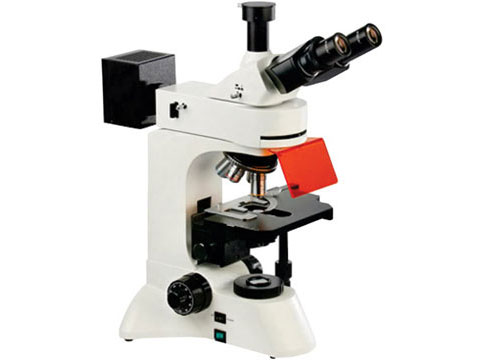In today's digital age, technology has revolutionized various fields, enabling advancements that were previously unimaginable. One such technological marvel is the digital microscope. With its ability to capture high-resolution images and videos, a digital microscope has found extensive applications in scientific research, industrial processes, healthcare, education, and much more. In this article, we will explore the diverse uses of digital microscopes and delve into their advantages, limitations, and future prospects.
What is a Digital Microscope?
A Digital Microscope is an advanced imaging tool that combines traditional microscopy with digital imaging capabilities. Unlike conventional microscopes, which rely on eyepieces for visual observation, digital microscopes employ a digital camera to capture images or videos. These images can be displayed on a computer monitor or other electronic devices, offering numerous benefits such as enhanced visualization, easy documentation, and sharing of findings.

Applications in Scientific Research
Digital microscopes play a pivotal role in scientific research across various disciplines. They facilitate the examination of biological samples, aiding researchers in studying cell structures, microorganisms, and intricate biological processes. The ability to capture high-resolution images allows for detailed analysis, enabling scientists to make groundbreaking discoveries in fields like biology, microbiology, and genetics.
Industrial and Manufacturing Uses
In the industrial and manufacturing sectors, digital microscopes have become indispensable tools for quality control, inspection, and product development. These Microscopes enable engineers and technicians to examine the surface of materials, identify defects, measure dimensions, and assess product integrity. The digital imaging capabilities help in analyzing the structure of materials and ensuring the adherence to precise specifications, leading to improved product quality and efficiency.
Medical and Healthcare Applications
Digital microscopes have found extensive applications in the medical and healthcare domains. They are used in pathology laboratories for the examination of tissue samples, aiding in the diagnosis of diseases and the monitoring of treatment progress. In dentistry, They assist in the precise visualization of dental structures, improving diagnostics and treatment planning. Moreover, they enable minimally invasive procedures and provide real-time imaging during surgeries, enhancing patient care and surgical outcomes.
Education and Training
In educational institutions, digital microscopes have transformed the way students learn about the microscopic world. With their intuitive interface and high-quality imaging, these microscopes offer an interactive learning experience. Students can explore various specimens, zoom in on specific details, and capture images for further analysis. it also facilitate remote learning by allowing students to share images and collaborate with their peers and instructors.
Forensic Investigations
Digital microscopes play a crucial role in forensic investigations, aiding forensic scientists in analyzing trace evidence, such as fibers, hair, and fingerprints. The ability to capture detailed images helps in identifying and comparing minute characteristics, assisting in criminal investigations and providing valuable evidence in court proceedings. The digital nature also allows for easy documentation and sharing of findings with other experts and legal authorities.
Quality Control and Inspection
In manufacturing industries, ensuring product quality is of paramount importance. Digital microscopes have become indispensable tools for quality control and inspection processes. These enable engineers and technicians to closely examine the surface of materials, identify defects, and measure dimensions with precision. The high-resolution imaging capabilities of digital microscopes allow for detailed analysis of product components, ensuring adherence to strict quality standards.
By using digital microscopes, manufacturers can detect imperfections, such as cracks, scratches, or uneven surfaces, which might not be visible to the naked eye. This level of scrutiny helps in identifying potential issues early on, preventing defective products from reaching the market. it can also assist in assessing the uniformity of materials, verifying the accuracy of measurements, and ensuring the overall integrity of the manufactured goods.
The digital aspect offers additional benefits in quality control. The captured images and videos can be easily stored, organized, and compared for future reference. This allows for effective tracking of product quality over time, making it easier to identify any trends or patterns that may arise. Furthermore, the digital documentation facilitates communication between different teams and departments, streamlining the quality control process.
Art and Conservation Applications
Digital microscopes have also found applications in the field of art and conservation. Art conservators and historians utilize digital microscopes to examine artwork, artifacts, and historical documents with meticulous detail. These enable them to analyze brush strokes, pigments, and the composition of materials, aiding in the authentication, restoration, and preservation of valuable artworks.
The high-resolution imaging capabilities are particularly beneficial for the examination of delicate or sensitive artifacts. They allow conservators to study intricate details without the risk of physically damaging the objects. By zooming in on specific areas, conservators can identify signs of deterioration, assess the impact of environmental factors, and develop appropriate conservation strategies.
Digital microscopes also play a crucial role in the field of archaeology, helping archaeologists uncover and study ancient artifacts. By analyzing microstructures and surface features, archaeologists can gain insights into the manufacturing techniques, cultural significance, and historical context of these objects. The digital documentation provided by these ensures that valuable archaeological findings are preserved and accessible for future research.
Advantages of Digital Microscopes
Digital microscopes offer several advantages over traditional optical microscopes. Firstly, the digital imaging capabilities allow for real-time viewing on a computer screen or other electronic devices, eliminating the need for eyepieces. This offers greater comfort during extended periods of observation and enables multiple people to view the specimen simultaneously.
Secondly, often have built-in features such as image capture, video recording, and measurement tools. These features enhance the functionality and versatility of the microscopes, making it easier to document findings, share images, and perform quantitative analyses.
Furthermore, it can be connected to external devices and software, enabling advanced image processing, 3D visualization, and data analysis. This integration with other technologies expands the possibilities for research, experimentation, and automation in various fields.
